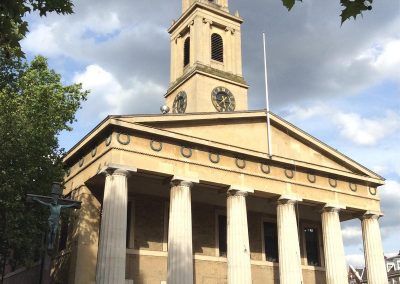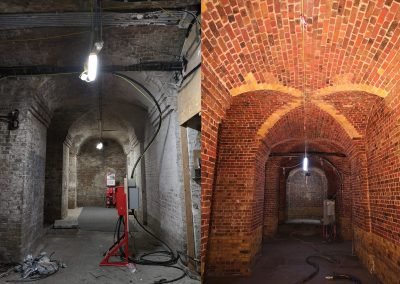Project: St Johns Church, Waterloo, London
Client: Buxton Building Contractors
St John the Evangelist Waterloo is a Commissioners’ Church, one of many built in the early 19th Century to cater to the rapidly growing population of London and also partly as a job-creation scheme for demobbed soldiers following the battle of Waterloo.
St John’s architect was Francis Octavius Bedford. It was built between 1822 and 1824 in the Greek Revival style on a swampy site relatively recently reclaimed from the Thames. The interior of the church was renovated in 1885 by Sir Arthur Bloomfield, and again in 1924 by Ninian Comper. On 8th December 1940 a high explosive bomb destroyed most of the interior of the church, but the walls were left intact, as was the crypt – at the time in use as an air raid shelter.
The church was restored by architect Thomas Ford and reopened for the Festival of Britain on 26th April 1951. It was a focus for the Festival, and has remained a place of encounter between the arts, society and faith ever since. The crowning glory of the restored church are two murals by Hans Feibusch, also dating from 1951. Feibusch was a German Jewish refugee artist responsible for more murals in Church of England churches than any other artist in its entire history – and is only now beginning to attract the recognition he deserves.
From 1984 to 2003, when this part of the South Bank was known as Cardboard City, the crypt was used as a homeless centre and serving the homeless is still central to our mission.
St John’s is now home to the Southbank Sinfonia, one of the world’s greatest youth orchestras, runs the annual Waterloo Festival of arts, community and heritage, and is pioneering a new response to post-Covid need: a programme of wellbeing, mental health and therapeutic arts activities for local young and homeless people called Waterloo Well.
Scope of works:
- Cleaning and restoration of catacombs and floors to main church


